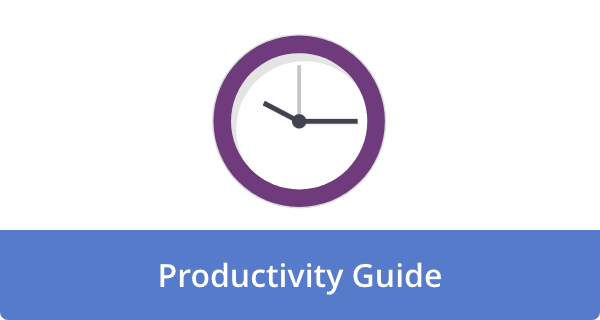

Feeling the winter blues? You’re not alone. During the colder months, Seasonal Affective Disorder (SAD) can leave many of us feeling drained, lethargic, and generally blah. According to the APA, about 5% of adults in the U.S. experience SAD (seasonal affective disorder), which typically lasts about 40% of the year.
However, what if I told you that your trusty calendar could help you fight SAD effectively?
By strategically planning your days, you can boost your mood and energy levels and overcome the challenges of this seasonal slump. This post will explain how to make the most of your calendar to fight SAD and reclaim your winter.
1. Schedule light therapy sessions.
Light therapy, also known as phototherapy or bright light therapy, uses artificial light to treat SAD and other related conditions. Generally, using light therapy requires spending about 30 minutes seated near a light box.
“Especially in the winter, our bodies react to the gray, cold weather and lack of natural sunlight,” says psychologist Adam Borland, PsyD, “What light therapy does is compensate for the lack of exposure from natural sunlight.”
How to use your calendar;
- Schedule 20-30 minutes of light therapy every morning.
- Consider pairing it with another activity like reading, journaling, or drinking coffee in the morning.
- Keep a consistent schedule, especially during the darkest months.
To ensure that light therapy is safe, Dr. Borland suggests you consult your healthcare provider first.
2. Plan outdoor activities.
Even on cloudy days, exposure to natural light can improve one’s mood. Spending time outdoors is also a great way to get some physical activity, which can lift one’s mood. In addition, exposure to natural light each day promotes a consistent sleep-wake cycle.
How to use your calendar;
- Go for daily or weekly walks, preferably during the day when it is brightest. If you can’t go then, find somewhere to walk. I walk inside my condo hallways; it works great: down the hallway, down the stairs, across that hallway, up the other stairs. It’s a great workout, and it helps.
- Take part in weekend outings, such as hiking, visiting a park, skiing, or exploring your neighborhood.
- Keep an eye on weather forecasts and find the best days to go outdoors. Try “Forest Bathing” or Shinrin-yoku.
You can still find time to connect with nature despite a busy schedule. A short burst of outdoor time, such as standing outside for five minutes, can provide a refreshing break. Taking a 25-minute walk will give you a little deeper connection to nature. You can even incorporate other activities into your time outdoors, such as taking a phone call.
3. Create a consistent sleep schedule.
SAD can disrupt your sleep patterns, making it difficult to wake up in the morning and fall asleep at night. However, you can stabilize your energy levels and mood by maintaining a regular sleep schedule.
How to use your calendar;
- Create a consistent routine by setting bedtime and wake-up alarms.
- Set aside an hour before bed for relaxing activities such as reading or meditation.
- Limiting time in the evening to avoid disrupting your sleep, or at least wear blue or orange glasses.
4. Incorporate exercise into your routine.
Exercise releases endorphins and reduces stress, which helps fight depression. Even small amounts of physical activity can make a difference. It’s been found that 11 minutes of moderate-intensity activity can lower your risk of heart disease, stroke, some cancers, premature death, and chronic diseases.
How to use your calendar;
- Set short, manageable workouts, like 15-minute yoga sessions or brisk walks.
- Schedule blocks of time to attend fitness classes, visit the gym, or use an online workout program.
- To build consistency, make sure these appointments are non-negotiable.
5. Prioritize social connections.
Winter days are often shorter and temperatures colder, resulting in increased isolation. Rather than socializing more, we stay indoors more, restricting our opportunities for fun and enjoyment. As a result, we might feel sad or depressed, and we might even become less physically active.
The good news is that social connections are your secret weapon against the winter blues.
Why social interaction matters;
- Boosts mood. Socializing can significantly improve your mood as well as combat loneliness and depression.
- Breaks the cycle. Participating in social activities breaks negative cycles and boosts positivity.
- Increases accountability. Even during the challenging winter months, social support can help you maintain a healthy routine, such as exercising and eating well.
How to use your calendar;
- Schedule it. Treat social time as an important appointment. Keep in touch with loved ones by calling, video chatting, or having coffee dates regularly.
- Join the crowd. Consider joining a book club, taking fitness classes, or attending a community event that interests you.
- Plan ahead. You can combat the urge to isolate yourself by scheduling social events in advance.
It’s important to remember that SAD doesn’t have to be something you face alone. Professional help, such as therapy or light therapy, can provide significant relief.
6. Organize self-care days.
Self-care is essential for managing SAD. Relaxing and recharging can improve one’s sense of balance and resilience.
How to use your calendar;
- Schedule specific days or evenings for self-care, such as bathing, journaling, or practicing mindfulness.
- Block off time for hobbies you enjoy, like painting, gardening, or playing music.
- Color-code your self-care events to help you prioritize them on your calendar.
7. Set goals and track progress.
Setting small, attainable goals can make you feel accomplished and purposeful, counteracting the apathy associated with SAD.
How to use your calendar;
- Divide larger goals into smaller tasks and schedule them throughout the week.
- Record your progress and celebrate your achievements on your calendar.
- Write motivational notes or affirmations to keep yourself motivated.
8. Incorporate gratitude and reflection.
Gratitude allows you to focus on what’s positive in your life rather than what’s lacking. When you reflect on what’s working and what needs to be adjusted, you can see what needs to be changed.
How to use your calendar;
- Take 5-10 minutes daily to write down things you’re grateful for.
- Set a weekly reminder to reflect on your successes and challenges.
- Write down positive experiences or moments of joy in your calendar.
9. Prepare for challenging days.
There may be days when things feel more challenging than others, and that’s okay. However, by planning ahead, you can make these moments easier to deal with.
How to use your calendar;
- Identify triggers, such as anniversaries or stressful events, and plan supportive activities to counteract them.
- Plan downtime or low-pressure activities on days when you anticipate feeling down.
- Set reminders on your calendar to remind yourself to exercise or call a friend for coping strategies.
10. Plan a vacation.
If you’re feeling blue in the winter, consider escaping to a place that offers plenty of sunshine and warmth. Think Florida’s beaches, Arizona’s desert landscapes, Hawaiian islands, or Southern California’s sunny shores. You’ll get consistent exposure to sunlight, which will boost your mood and energy levels.
How to use your calendar;
- Identify your SAD window. When does SAD usually hit you hardest? Make a note of these dates in your calendar.
- Research potential destinations. Schedule time to visit travel websites and blogs to learn about sunny destinations that meet your budget and interests.
- Block off vacation time. Once you have chosen a destination, immediately block off the vacation dates in your calendar. This will prevent other obligations from interfering with your much-needed escape.
- Set budget reminders. Keep track of your progress in your vacation savings by creating recurring reminders on your calendar.
- Book flights and accommodations. Once you have a budget in place, use your calendar to make flight and accommodation bookings.
- Plan activities. Your calendar can help you plan exciting trips, such as beach days, water sports, or exploring local attractions.
With proactive planning and use of your calendar, you can effectively combat SAD and ensure you have a sunny getaway to look forward to during the darkest months.
Final Thoughts
Using your calendar to combat SAD doesn’t have to overload your schedule or add stress to your day. It’s all about creating a routine and prioritizing your emotional and mental health. The key to managing SAD is to plan activities that promote social connections, exercise, and self-care.
Always start small, adjust as needed, and be consistent. Throughout the season, these intentional efforts can significantly impact how you feel. In addition to being a planner, your calendar serves as a tool for empowerment and healing.
FAQs
What is Seasonal Affective Disorder (SAD)?
Seasonal depression refers to depression triggered by changes in weather. Each year, it typically begins and ends at the same time. The condition is more than just the “winter blues.” SAD can have a significant impact on a person’s daily activities.
What are the symptoms of SAD?
Symptoms include;
- Mood. Having thoughts of suicide or feeling hopeless, worthless, or sad.
- Sleep. Insomnia, drowsiness, or difficulty waking up during the day.
- Energy. A feeling of fatigue, sluggishness, or low energy.
- Appetite. A sugar or carbohydrate craving, overeating, or weight gain.
- Concentration. Having difficulty focusing, remembering, or making decisions.
- Social withdrawal. A tendency to withdraw from friends and family or a sensitivity to rejection.
- Physical symptoms. Having headaches, cramps, digestive problems, or physical pains.
- Other symptoms. Having an irritable mood, a decreased sex drive, or struggling to think clearly.
There is a wide range of symptoms associated with SAD, ranging from mild to severe, and they can be disruptive to daily life. In most cases, SAD can be diagnosed if someone experiences depression every year at the same time.
What causes SAD?
The exact cause of SAD is unknown. However, it has been linked to changes in the body’s internal clock (circadian rhythm) and reduced sun exposure.
Possible factors include;
- Reduced sunlight. A shorter day decreases the body’s production of melatonin (a hormone that regulates sleep-wake cycles) and serotonin (a neurotransmitter that affects mood).
- Changes in brain chemistry. A lack of serotonin or melatonin in the brain may play a role.
- Vitamin D deficiency. Reduced sunlight exposure can result in vitamin D deficiency, which may contribute to SAD symptoms.
Who is at risk for SAD?
- Women. Women are more likely to suffer from SAD than men
- People living farther from the equator. People living in regions with less sunlight during certain seasons are at greater risk.
- Family history of SAD or depression. An individual with a family history of SAD or another depressive disorder is at higher risk.
- Individuals with other mental health conditions. People with existing conditions like anxiety disorders or bipolar disorder may be more susceptible to SAD.
How is SAD treated?
- Light therapy. Bright light can improve mood and regulate the body’s natural sleep-wake cycle. In light therapy, you sit in front of a light box for a determined amount of time each day.
- Medications. The use of antidepressants, especially selective serotonin reuptake inhibitors (SSRIs), can be effective in treating SAD.
- Psychotherapy. CBT, or cognitive-behavioral therapy, can help individuals identify and change negative thought patterns and behaviors related to SAD.
- Lifestyle changes;
- Regular exercise. In addition to boosting mood, physical activity improves sleep.
- Healthy diet. You can maintain your general health and well-being by eating a balanced diet.
- Social interaction. In addition to providing emotional support, maintaining social connections can help combat feelings of isolation.
- Mindfulness techniques. It can reduce stress and improve mood by practicing meditation and deep breathing.
Image Credit: Taisia; Pexels











Abby Miller
Student at UC Berkeley, currently working on a degree in Electrical Engineering/Computer Sciences and Business Administration. Experienced in CSX, productivity management, and chatbot implementation.